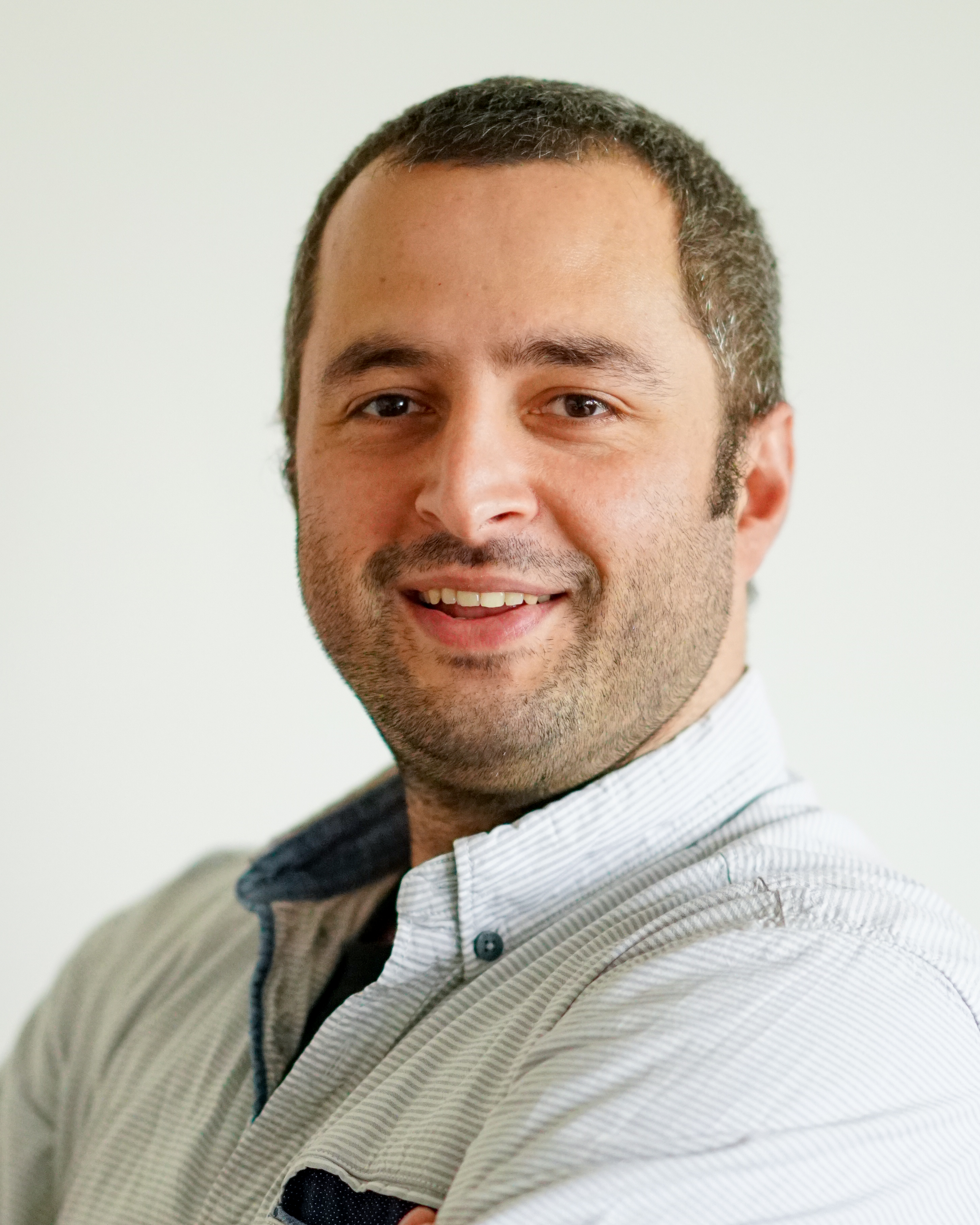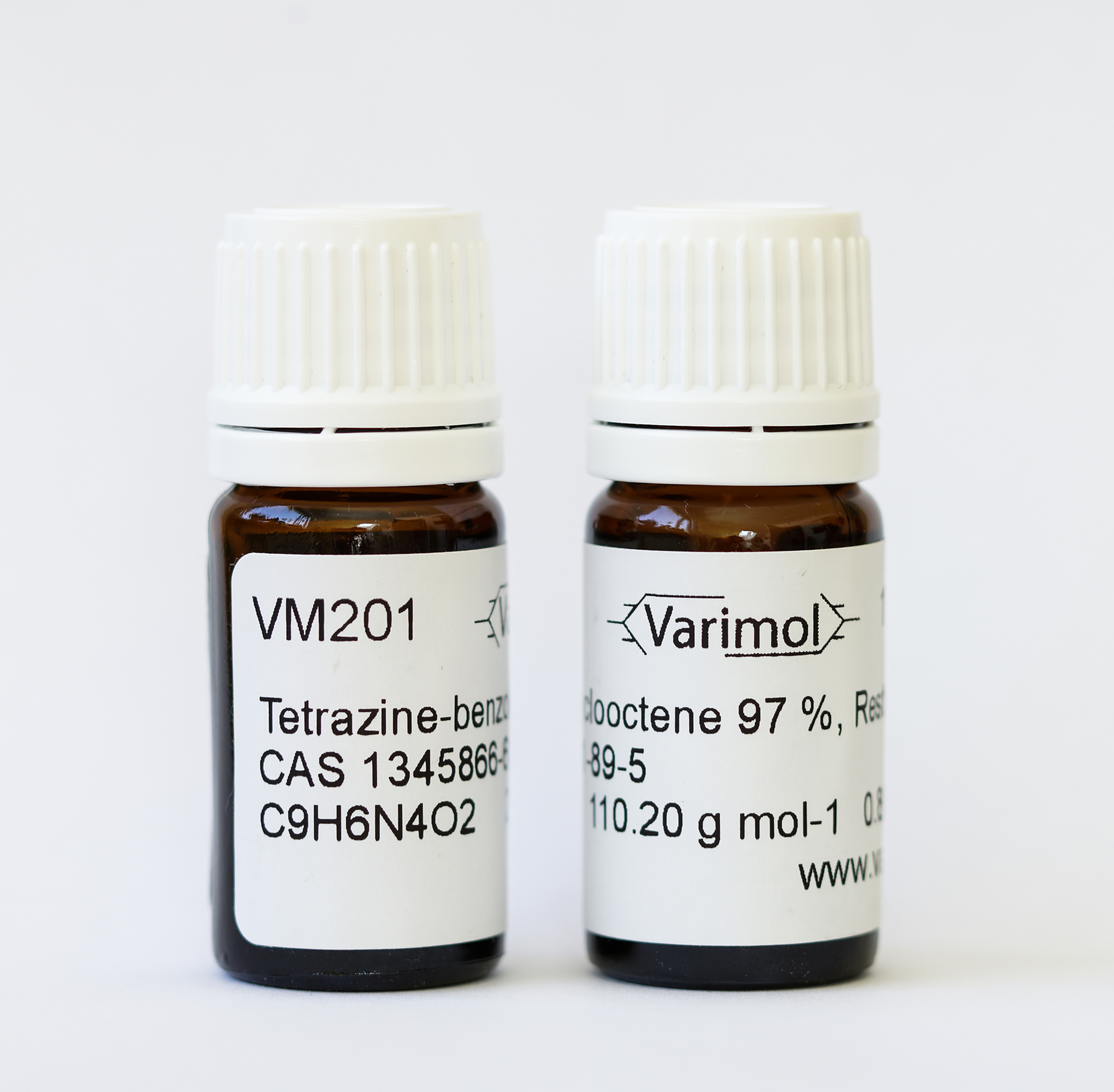TGU Varimol
Click chemistry for new medical procedures
Using a simple molecular click process, biochemists have recently been able to connect ring-shaped molecules with each other and couple therapeutically active substances to these molecules. Drugs can thus be specifically delivered to diseased cells and used for imaging processes or biosensors. The Stuttgart-based start-up Varimol is using this new technology to provide its customers with tailored biological and pharmacological applications that are as simple to use as a kit.
It is extremely difficult to transport biomolecules or dyes into organs or cells for therapeutic purposes or imaging purposes. On one hand, there are often no starting points to transport the therapeutic agents to the site where they are required. On the other hand, the kind of transport molecules that were previously used can have undesirable side effects when they react with cell components, thus interfering with the body’s complex metabolic processes.
Such limitations may soon be a thing of the past thanks to a new technology called click chemistry. As the term suggests, it is a way to connect two large, complex biomolecules, such as dyes or therapeutic substances, very quickly with the help of simple building blocks and thus use them for a wide variety of medical and pharmacological applications, for example, injecting them into diseased cells.
A toolbox packed with click chemistry
 Dr. Vasileios Filippou is one of the four founders of the start-up company Varimol. © Varimol
Dr. Vasileios Filippou is one of the four founders of the start-up company Varimol. © VarimolTGU Varimol (TGU: transfer and start-up companies), a Stuttgart-based start-up founded around a year ago, specialises in click chemistry. It offers services and products related to this innovative technology: "First, we help our customers plan their specific application by discussing with them which tool from our toolbox - we call it the "bioorthogonal toolbox" - would be suitable for their specific purposes," says Dr. Vasileios Filippou, one of the four founders of the start-up company. "We also provide them with the reagents that we already have in stock or that we manufacture individually in a custom synthesis process. In addition, we develop our own click reagents - our Varimol innovations."
Filippou came up with the idea of founding a company when he was doing his doctoral work at the University of Stuttgart. "Wolfgang Kaim - one of the world's most cited researchers in the field of tetrazines - and his successor, Prof. Dr. Biprajit Sarkar, did and still do basic research into tetrazines," he says. "At the time, I was part of a working group on click chemistry and I was hearing about the problems that people experienced with the reagents required to produce the basic molecules, tetrazine and trans-cyclooctene. Commercial availability of these molecules was not satisfactory. Tetrazine synthesis is considered to be one of the supreme disciplines of organic synthesis: for some derivatives, synthesis only produces half a gramme of product up to a hundred grammes of starting materials. This is because the reaction cannot be scaled well. Unfortunately, there is no way that production can be carried out on a kilogramme scale. That’s where I saw my niche and began thinking about starting a company to manufacture starting materials for synthesising potential pharmacological agents."
However, since Filippou was still in post as a visiting scientist at the Institute of Inorganic Chemistry at the University of Stuttgart at the time he was working on the development of the modular platform technology and since, although a patent was filed, a technology transfer was not possible, he decided to team up with three other people to set up a company and move the project forward. He brought in Felix Willig, a synthetic chemist, Christian Dörr, a chemist and engineer, and David Gepperth, a business chemist, and the four experts have been working together on the Varimol start-up project since mid-2019. The young start-up is currently processing its orders via the TTI - Technologie-Transfer-Initiative GmbH at the University of Stuttgart (TTI GmbH). TTI GmbH is a subsidiary of the University of Stuttgart and enables graduates who wish to start a business to actually do business without having to register their company in the companies’ register.
Novel therapies, imaging methods and more
Click chemistry is based on a (4 + 2) cycloaddition, called inverse electron demand Diels-Alder reaction (IEDDA reaction), in which six-membered heterocycles, the tetrazines (Tz), are attached to cyclic hydrocarbons, the trans-cyclooctenes (TCO), in a chemically very simple way, with one click. This click reaction creates bicycles with extremely stable covalent bonds, which can thus bind other (bio) molecules - shown as stars and spheres in the illustration - for a wide variety of applications.
"Proteins such as antibodies, therapeutic RNA or DNA can be attached to our reagents," explains the scientist. "But our reagents can also be used for completely different applications. In the materials sciences, molecules can be immobilised on surfaces such as gold, glass, bones and hydrogels. Furthermore, our imaging reagents can not only be equipped with biomolecules, but also with dyes, such as fluorophores or metal atoms as contrast agents. We can thus observe live what is happening in living cells."
 The click reaction can be used to connect large, complex biomolecules with one another that can then be used, for example, for medical purposes: the starting materials tetrazine and trans-cyclooctene can be attached to any chosen biomolecules - shown here as stars (for example a protein) and spheres (for example a dye). In the click reaction, bicyclic compounds are created from the starting materials. © Varimol
The click reaction can be used to connect large, complex biomolecules with one another that can then be used, for example, for medical purposes: the starting materials tetrazine and trans-cyclooctene can be attached to any chosen biomolecules - shown here as stars (for example a protein) and spheres (for example a dye). In the click reaction, bicyclic compounds are created from the starting materials. © VarimolThe molecules from the click kit are also often used as biosensors, for example for resolving pharmacological questions. Molecules are immobilised on solid supports such as glass or gold to investigate how they react to external stimuli such as light or heavy metals. Such biosensors can also be used for toxicological studies.
The reaction occurs without disturbing the metabolism
Click chemistry is particularly interesting for applications in the life sciences not only because the reaction occurs extremely quickly without a catalyst and with a minimal amount of starting substrates in the nanomolar range, but also because the chemicals used are non-toxic and react bioorthogonally during the click reaction, i.e. without interfering with the biological processes in the cells. Therefore, while the technology continues to be used in vitro, it is already being tested in ongoing preclinical and clinical studies, for example in the area of cancer diagnostics.
For example, a human monoclonal antibody (shown as a blue star in the picture) could target antigens on pancreatic carcinomas*. For this purpose, the antibody is injected into the patient as a conjugate with TCO. As soon as the antibody has reached its destination, a tetrazine is injected, which carries a copper-containing contrast medium (depicted as a red star in the illustration). The click reaction immobilises the contrast medium only in the area of the carcinoma, thus making it possible to localize the cancer cells with an imaging method.
The advantage of this procedure lies in the significantly lower amount of toxic contrast agent that needs to be injected into the patient in order to be able to make meaningful diagnoses. Current diagnostic and therapeutic approaches flood the whole body with toxic substances, despite only a local effect being desired in the majority of cases. "In combination with antibodies, the click reaction represents a kind of taxi that delivers the active ingredients to the desired location," says Filippou. “Another advantage is the length of time the toxic contrast agent stays in the patient's body: while antibodies need several days to accumulate in the carcinoma, the click reaction takes only a few minutes. As a result, the patient is exposed to the toxic contrast agent for a significantly shorter time. The click reaction is expected to have fewer side effects when used for the diagnosis and therapy of cancer. However, this will first have to be confirmed with clinical studies.”
Click chemistry advice and marketing
 Varimol customers receive all the necessary reagents for their applications in two small bottles. © Varimol
Varimol customers receive all the necessary reagents for their applications in two small bottles. © VarimolSince 2019, Varimol has been generating income from the research chemicals that the young start-up is currently producing in the milligramme range, thus providing the necessary biochemical reagents for a wide variety of research work and studies. “We deliver the connection, the molecular glue for the click reaction, so to speak, in two small bottles. They are as easy to use as any other ready-to-use kit. Of course, we also provide advice on determining test conditions such as pH or temperature for the respective reactions,” says Filippou.
The major customers for the chemicals produced by the Stuttgart-based company are currently research institutions. However, the first university hospitals in Germany and increasingly throughout Europe have already started to purchase click reaction ingredients from the company. "Currently, we can only provide pharmaceutical companies with reagents for preclinical examinations," says the company founder. "We still lack the necessary certifications for clinical applications, and this possibility is not yet part of our future plans. However, we do not want to exclude this target group for the future either. We will decide later this year and the decision will very much depend on the interests of our customers. If we were to include reactions for clinical trials, this would not necessarily mean that we would have to be certified and change the whole laboratory. We could even commission a service provider who already possesses the necessary certifications for synthesising reagents for clinical trials.”